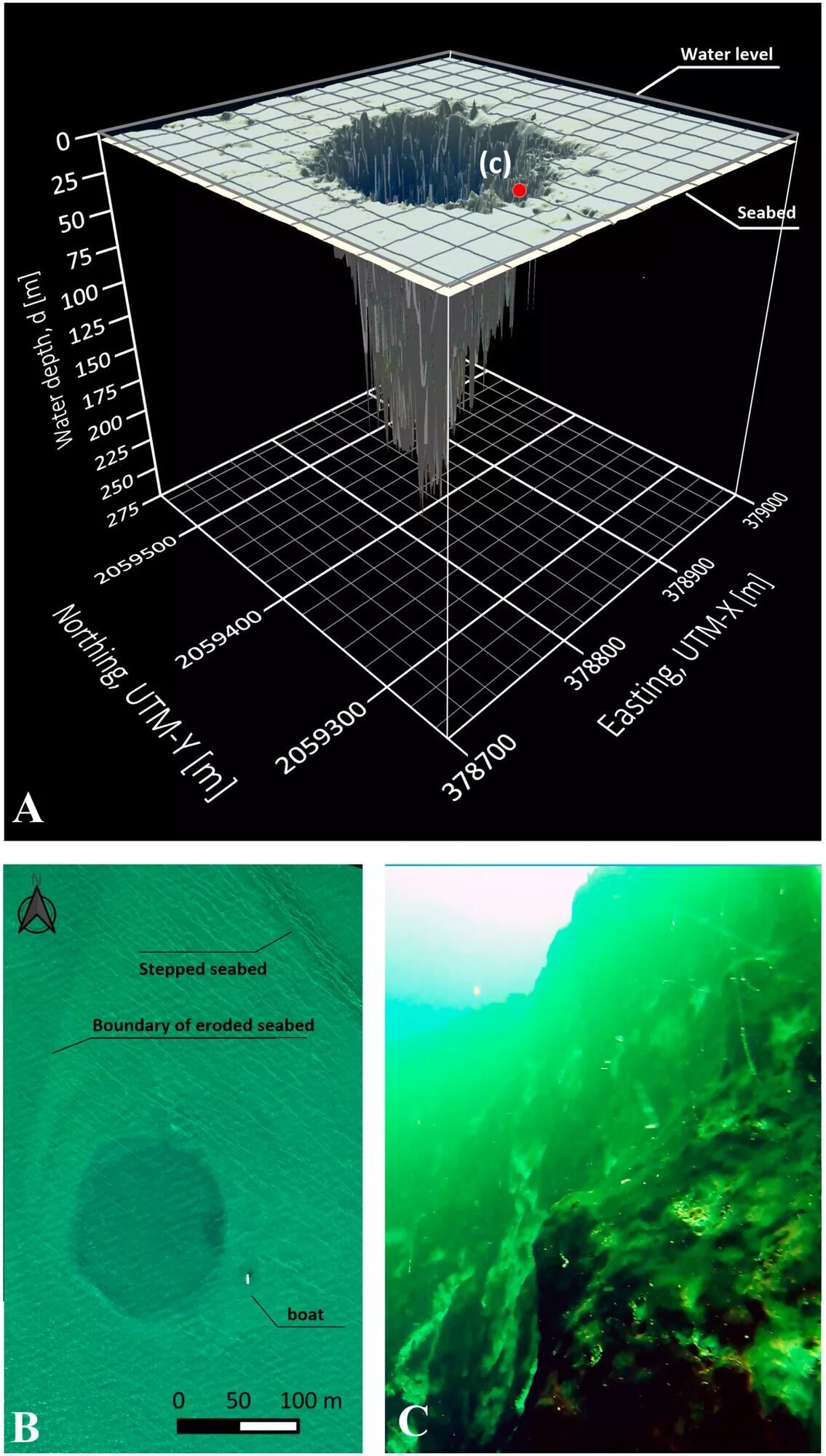A huge blue hole found in the Gulf of Chetumal in Mexico: what makes it unique

The second deepest blue hole in the world has been discovered in the south of the Caribbean coast of Mexico. The discovery was made by researchers from the National Council of Science and Technology of Mexico (Conacyt).
The Taam Ja Blue Hole (Mayan for "deep water") is located on the seabed of the Gulf of Chetumal and has a depth of 274 meters with an area of 13,690 square meters, IFLScience reports. Meanwhile, the deepest known blue hole in the world, the Dragon Hole in the South China Sea, which was discovered in 2016, is over 300 meters deep.
Blue holes are large underwater vertical caves or sinkholes found in coastal areas. Many of them contain a wide variety of plants and marine life. They contain little oxygen and sunlight illuminates only their surface.
Read also: A gruesome discovery: 20 decapitated bodies were found in the Mayan death pyramid
Scientists say that blue holes can give an idea of what life was like thousands of years ago. Researchers note that without much oxygen or light, fossils can be well preserved, allowing scientists to identify the remains of extinct species.

Blue holes can also tell science more about life on other planets. For example, in 2012, researchers studying blue holes in the Bahamas found bacteria deep in caves where no other life forms lived. Such discoveries could provide clues to what kind of life might exist in extreme conditions elsewhere in our solar system.
Read also: Archaeologists in Mexico found a Mayan toy: what Pok Ta Pok looks like

IFLScience reports that scientists at El Colegio de la Frontera Sur (Ecosur), a public research center coordinated by Mexico's National Council for Science and Technology (Conacyt), first discovered the second-largest wormhole back in 2021. However, her research was presented on February 23 in the journal Frontiers in Marine Science.

They created a three-dimensional map showing this hole.
Scientists say that blue holes form when seawater mixes with limestone. Limestone is very porous, so water easily penetrates the rock, allowing chemicals in the water to react with the limestone, eating away at it. Many of the world's blue holes were probably formed during past ice ages when recurring flooding and draining of coastal areas eroded rocks and created voids. When the last ice age ended about 11,000 years ago, as sea levels rose, these caves were filled with water and some were completely flooded.
Since blue holes are very difficult to access, scientists have not studied many of them.
Let's find out what exactly scientists found out when they revealed the secret of the May calendar.
Earlier, archaeologists established the true size of the largest Maya settlement.
If you want to get the latest news about the war and events in Ukraine, subscribe to our Telegram channel!
